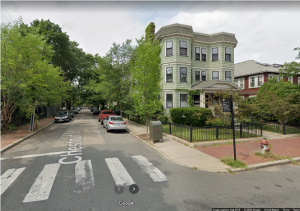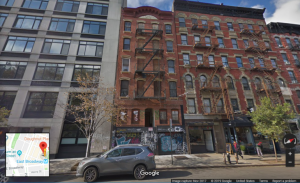Rent Control
Rent control is the name given to a broad class of ordinances or laws that seek to restrain rent increases according to a predetermined formula calculated by a government or non-profit rent control board. The motivation is to help low-income households remain in areas experiencing price increases.
Our lawsuit against the City of Boston continues, and rent control is heading for the ballot. There's no time to waste. Help us stop rent control!
Rent control was outlawed in Massachusetts in a 1994 referendum.
2023 - 2024 Session (193rd)
- Boston Rent Control Presented to Council
- S.872 An Act enabling local options for tenant protections
- H.1304 An Act enabling local options for tenant protections
2021 - 2022 Session (192nd)
- Boston Stalls on Rent Stabilization Advisory Committee (RSAC) Public Records Request
- Talking Points: The Legislature Needs to Hear from You opposing Local Control of Housing Policy
2019 - 2020 Session (191st)
- H.1316 An Act relative to the stabilization of rents in towns and cities facing distress in the housing market. MassLandlords opposes.
- H.3924 An Act enabling local options for tenant protections. MassLandlords opposes.
What Rent Control Supporters Say
Advocates say that rent control is needed to help low income households remain in their communities. They say that keeping such families in their original communities tends to increase diversity of neighborhoods, stabilize families, and prevent gentrification.
- Related Article: Patricia Cantor, Shelterforce Online, March/April 1995, "The tenants lost the war to save rent control. How did it happen?"
What We Know About Rent Control
One survey of real econometric data was written in 2009 by the Massachusetts-based American Institute for Economic Research.
- Scholarly Article: Rent Control: Do Economists Agree?
This work focused on the effect of rent control in many areas:
- Allocation of units
- Maintenance
- Availability of units
- Effect of controls on controlled rents
- Effect of controls on uncontrolled rents
- Homelessness
- Administrative costs
- Benefits
Highlights of the survey:
Allocation of Units
Estimates of misallocation (meaning, living in a space too large or too small compared to the ideal one) ranged from 11% to 21% of renters in the case of first generation controls, meaning, absolute price locks. In these cases, tenants stayed on average 18 years longer than identical tenants in market rate apartments (p. 91 - 92). Correlation with age, race, and income level reduced the significance of this difference in one study.
Maintenance
Many researchers found that maintenance declined overall by single digit percentages, but the evidence did not seem to offer incontrovertible proof. In some locations and for some types of maintenance the effects were pronounced, in others not so. Pre-1947 buildings in Manhattan, for instance, were found to be 8.96% more likely to be unsound than their equivalent uncontrolled counterparts. New buildings showed no difference. One study found that an average 3% benefit in rent was offset by an average 2% penalty in reduced maintenance (p 95).
Availability
The clearest data here come from Cambridge and Boston during rent control and decontrol in the 70's and then 90's. Landlords converted rental housing into condominiums. Whereas 75% of units were renter-occupied in 1970, only 66% were in 1980. In the 90's, the end of rent control was "associated with a 6 percentage point increase in the probability of a unit being a rental." In Boston alone, a 6% loss would equate in today's terms to a loss of 16,000 rental units (based on the 2020 census 269,522 households in Boston).
Effect of Controls on Controlled Rents
In places with absolute price locks, there was a substantial subsidy that came from living in a controlled apartment, in one study, 27% of annual household income.
In places with rent stabilization (maximum increases), controls affected the timing but not the total amount of rent paid. Landlords set the initial rent level under a vacancy allowance and tenants mistakenly chose higher initial rent in exchange for smaller price increases. In fact they ended up paying the same total rent over time (p. 95 - 96).
In addition to this, even without vacancy allowances, the whole effect was "to shift the supply curve back," meaning to reduce unit availability.
According to one study, "The average estimated benefits are -$4 [a loss, in 1995 dollars] per month for households in ‘old style’ rent controlled housing and -$44 per month for households in rent stabilized apartments. This implies that, on average, households in regulated units would have been better off if rent regulations had never been established in New York City."
Effects of Controls on Uncontrolled Rents
Here there was mostly agreement that rent control increased the rent of uncontrolled apartments. The lowest data point was 13% immediately, diminishing over time. The highest data point was 46% after two years.
In some specific cases, uncontrolled buildings did experience reduced rents. This occurred when the building was near a rent-controlled building that was not being maintained.
- Related Data: Zumper High-End Apartments Priciest in San Francisco, New York, Cities with Rent Control
Homelessness
Some studies said rent control helps, others said it hurts. There was no clear signal.
Administrative Costs
These were negative. In the case of New York City rent-stabilized apartments, which approximated what the market was going to do anyway, the effect was pure waste. In the case of Cambridge in the 70's, the cost was $40 per year for each of the 18,000 apartments under control. In today's dollars, the taxpayer cost of the same program would be $4.4 million annually.
Our favorite quote from any economic review: "Measurements of administrative costs remind us that bureaucracies are a player and an interest group." Or as one cynic put it, "There's a lot of money in poverty."
Alignment with Low-Income Renters
There was strong evidence that targeting was poor. Whereas a Section 8 voucher could be assigned directly to a low-income household, rent controlled apartments were available to all. During Massachusetts' rent control years, 30% of rent-controlled apartments were occupied by households in the upper half of the income distribution. Landlord preference for less risky tenants played a role in the unfair distribution of benefits.
Paul Krugman, New York Times, Reckonings; A Rent Affair
Racial Equality
The above survey did not address whether rent control helped or hurt racial equality. The Urban Institute ("Rent Control: What Does the Research Tell us about the Effectiveness of Local Action") has compiled some papers indicating that racial equality can be helped or harmed by rent control.
Sims 2007 showed that rent control in Massachusetts resulted in only 12% of renters of color occupying rent controlled units, even though 24% of the residents in those cities were residents of color, implying an adverse disparate impact against renters of color.
Likewise, the Economist provides a confirmatory dataset for Massachusetts ("Rent Control: The Morning After"). When rent control was repealed, the number of people of color in formerly controlled housing doubled to be equal to what you'd expect based on the city population.
Rent Control Talking Points
As a public policy, we believe rent control has several flaws:
- It leads to the decline of housing quality.
- It discourages good people from becoming landlords.
- It tends to increase prices in the very neighborhoods it was meant to help.
- It is regressive and causes disparate impact.
- It increases the tax burden of single family owners.
Flaw 1: Rent Control Leads to the Decline of Housing Quality
Owners of private property in a free market must be able to do four things that rent control outlaws or severely restricts:
- Set rent prices
- Deliver up for sale a vacant building
- Conduct major repairs or renovations
- Use the property in ways not expressly envisioned by the laws or ordinances (e.g., create an on-site office or storage space)
These rights are important to the workings of our free economy.
First, price negotiation must take place in the market, where participants are free to agree or not to agree based on the information available to them. Landlords may want higher rent to offset a history of being rough on units. Tenants may want lower rent to compensate for old cabinets. Setting prices or price increases in a Soviet-style central office doesn't work, and tends to err on the side of rents that are too low to maintain a building.
Second, real estate markets sometimes require buildings to be empty upon sale. This is partly because the new landlord doesn't trust the old landlord's screening and tenant selection. Other times it's because the building will be renovated or reworked somehow.
This brings us to the third right. Sometimes buildings require serious renovations. A collapsing floor, a new elevator, or efficiency upgrades may require units be empty for months. Buildings that are never emptied drift forward through time like little bubbles of the 1950's, 60's or whatever decade they were last refinished.
The fourth and final right is the most important, and is most severely abrogated in specific types of rent control called "just cause eviction." By specifically legislating what one can do with a property, such "just cause" restrictions eliminate all innovations and freedoms that are yet to be discovered. As a matter of principle, laws should be written as restraints, not as permissions.
- On average, older rent controlled buildings may be up to 8% more likely to become unsound.
- For every 3% reduction in rent, there is a 2% penalty for reduced maintenance.
Those four rights are essential to the operation and maintenance of properties. The effect of rent control is to push these properties into decay or obsolescence.
Flaw 2: Rent Control Reduces Housing Supply
Tenant advocates want "stability." Through "just cause eviction" or "rent control," they want to give moral, obedient tenants an indefinite claim on the property they rent. They aim to create a kind of indefinite lien, a tenancy-ad-infinitum.
The average market tenancy is about two years, whereas the average rent control tenancy is about 20 years. Once you get a rent controlled apartment, you don't want to leave and you cannot afford to leave. Those units are effectively off the market.
Furthermore, the loss of rights and economic opportunity for landlords is not lost on current owners and prospective owners. Unlike renters under rent control/just cause eviction, who have an indefinite claim on their housing, owners have no such claim. Owners can lose their home if they fail to pay increases to their taxes, insurance, utilities, or mortgage, none of which are themselves controlled against inflation. Owners have no permanent right to remain in their home if these expenses increase. The city will raise taxes, or water and sewer rates, and the owner must pay. The bank may issue an adjustable rate mortgage, and if the rate increases, the owner must pay. It is easy to create situations where a property is worth nothing as a going concern because the rents coming in do not cover the required expenses.
Under rent control, tenants would be insulated from all market forces. They would also be insulated from all legal forces not expressly contemplated in the rental agreement or approved by the rent control board. The smartest people would therefore choose to rent.
Rent control sends a clear message that smart people should not become landlords.
- Notable MassLandlords members have already shifted their portfolios out of Massachusetts just because of current laws, nevermind rent control.
- Under the unfunded eviction moratorium, a form of price setting, the number of units being held vacant for reasons other than renovation, rent, or sale has doubled.
Flaw 3: Surprisingly, Rent Control Tends to Increase Rent Levels
Basic supply and demand requires that as supply decreases, prices will increase for a given demand. Take any neighborhood, remove some of the units from the market, and the remaining units will command a higher rent.
As described above, rent controlled apartments are so desirable that few ever leave them. These units are effectively removed from the marketplace, and the remaining uncontrolled units are the only "supply" left to meet housing "demand."
- Reenacting rent control could be expected to remove 20,000 units of housing from the metro Boston market over the next ten years.
- Studies of rent control in other areas have shown average rent increases of between 13% and 46% for uncontrolled units.
Flaw 4: Rent Control is Regressive and has a Racist Disparate Impact on People of Color
Advocates of rent control argue correctly that passing rent control (especially with just cause eviction) will keep people of color in their apartments longer. But that's only true for people lucky enough to have housing when the law is enacted. Rent control hurts everyone else forever after, some of us more than others.
Under rent control in the 1970’s, one-third of rent controlled housing went to the top half of income earners. David Sims published a paper in 2007 that showed rent controled units in Massachusetts were occupied by renters of color only 12% of the time, even though 24% of the residents in those cities were residents of color. This implies an adverse disparate impact on the basis of race.
The adverse disparate impact is specifically because of rent control. When rent control was repealed, the number of non-white residents of formerly controlled housing doubled right back to where you'd expect it to be (The Economist, 1998). How can this be?
Normally, landlords can increase rent to offset perception of risk, including credit, income, and criminal history for marginal applicants. Under rent control, especially with just cause eviction, landlords hold units vacant longer waiting for applicants with high credit, high income, no history of minor criminal record, and no eviction history. But in Massachusetts no less than America, systemic racism disadvantages people of color on rental applications in all four metrics:
- The Economic Policy Institute shows 2018 median household income was $41,692 for black households and $70,642 for white households.
- ApartmentList shows black households are twice as likely to be evicted as white households.
- The Urban Institute shows 21 percent of black households have a FICO credit score above 700, whereas 50 percent of white households do.
- And a report from the Sentencing Project shows African Americans constitute 53 percent of drug convictions, despite representing 14 percent of drug users.
Despite strong protections in Massachusetts against personal discrimination, rent control and just cause eviction worsened systemic racism. This in fact was predicted in 1985 by a Finn economist Heikki Loikkanen, whose seminal article "On Availability discrimination under rent control," provides the theoretical proof for the above data.
- In the 1970's, a third of rent controlled tenants were in the top 50% of household income.
- When rent-control was repealed, "the number of non-white tenants in formerly regulated units has actually doubled" (Economist)
- Rent controlled apartments went preferentially to the wealthy and well-to-do, including Cambridge Mayor Ken Reeves and SJC Judge Ruth Abrams.
Rent control will help every renter lucky enough to have an apartment when the law passes into effect, but will make it more difficult for all future renters moving to or within Massachusetts. People of color will tend to be unfairly and disproportionately impacted.
Flaw 5: It Increases the Tax Burden of Single Family Owners
Real estate taxes are levied on assessed value. Assessed value is driven by market prices from the last few years. Market prices for income properties are driven, in part, by rent levels. Lower rents therefore contribute to lower real estate tax revenue.
Municipalities that enact rent control and that also seek to balance the budget must eventually raise taxes on businesses and single family owners. This assumes all else remains equal. In communities with high percentages of residential owners, the tax burden would fall squarely on them.
- Related Page: Massachusetts Dual Tax Rates: A Case Study in Worcester
This again is something that few tenant advocates would want. Most would agree that landlords should have to pay according to the density and the people living in their units. But as rent control keeps rents artificially low, it shifts the municipal burden away from landlords. In most Massachusetts communities, this burden would fall heaviest, in terms of percentage increases, on single family owners.
- The Cambridge budget for 1970's rent control was $700,000 annually. In 2015 dollars that would be over $4 million annually in additional administrative costs to be carried by the tax base.
Rents are a Symptom, not the Cause
High rents are a symptom, not the cause of the problem. You might go to the doctor thinking something is wrong with your foot, but wouldn't you be surprised to learn that you have unmanaged diabetes. Economists have been trying to tell us for decades that we have unmanaged zoning problems. Or to use a different medical analogy:
Notable Commentary
Paul Krugman wrote in a June 7, 2000 opinion piece in the New York Times, Reckonings; A Rent Affair, "people literally don't want to know. A few months ago, when a San Francisco official proposed a study of the city's housing crisis, there was a firestorm of opposition from tenant-advocacy groups. They argued that even to study the situation was a step on the road to ending rent control -- and they may well have been right, because studying the issue might lead to a recognition of the obvious."
MassLandlords Work in Progress
External Links
- The Economist, "Rent Control: The Morning After", April 30 1998
- NMHC, "The High Cost of Rent Control"
- In first months since passage of St. Paul’s rent-control ordinance, housing construction is way down, MinnPost, Bill Lindeke, March 10, 2022
- Out of control: What can we learn from the end of Massachusetts rent control?, David Sims, 2007. Journal of Urban Economics.
- On Availability Discrimination under Rent Control, Heikki Loikkanen, 1985, The Scandinavian Journal of Economics.
- Massachusetts local aid tables
- Freakonomics: Why Rent Control Doesn’t Work (Update Jul 28, 2024)
Join as a member and help us create a market that works for everyone.
















